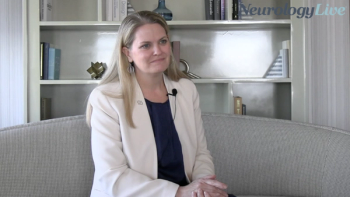
Relapse in Multiple Sclerosis: A Hallmark of Disease
Stephen Krieger, MD: Hello, and thank you for joining this NeurologyLive™ Peer Exchange titled “Treatment of Multiple Sclerosis Relapses.” Multiple sclerosis [MS] is an inflammatory demyelinating and progressive disease that affects the central nervous system. It is frequently diagnosed in young adults; however, individuals may be diagnosed at any age. A relapse of MS is the occurrence of new symptoms or the worsening of old symptoms. It can be mild or very severe, and it varies from person to person.
In this NeurologyLive™ Peer Exchange discussion, I am joined by a panel of my colleagues, all experts in the field of multiple sclerosis. Together we are going to discuss the therapeutic options available to treat multiple sclerosis relapses, including a discussion on new treatment algorithms, and provide practical perspective on how the recent data apply to your clinical practice.
I am Dr Stephen Krieger, an associate professor of neurology at the Icahn School of Medicine at Mount Sinai Hospital in New York, New York. Participating today on our distinguished panel are Dr Joseph Berger, an associate chief of the MS Division and a professor of neurology at Penn Medicine at the University of Pennsylvania in Philadelphia, Pennsylvania; Dr. Robert Bermel, a neurologist and the director of the Mellen Center for Multiple Sclerosis at Cleveland Clinic in Cleveland, Ohio; Dr Samuel Hunter, president of Brain and Nerve Neurology at Advanced Neurosciences Institute in Franklin, Tennessee; and Amy Perrin Ross, the neuroscience program coordinator at Loyola University Medical Center in Maywood, Illinois.
Thank you to all of you for joining us. Let’s begin our conversation. So let’s start by talking about what an MS relapse is. It’s the reason we’re here today. I would start by saying that the MS relapse is the hallmark feature of this disease. A lot of attention has been paid to progression in MS and long-term clinical course, which are of course important. But recognizing an MS relapse and treating it remain the foundational thing in our field and even in how we think about our different types of MS when we talk about the presence of disease activity. What we really mean are those inflammatory events that either lead to relapse or lead to new lesions.
Relapses remain important in multiple sclerosis, and sometimes disease activity can be obvious to the patient and to the provider, or sometimes it can be subtle. I think part of what we’ll talk about today is how can we improve our nuances in recognizing MS relapses, looking for disease activity and figuring out how to treat these events. Let’s start there and say, Rob, how often do MS relapses still happen? We’ve gotten pretty good at treating with disease-modifying therapies. Are relapses still a problem?
Robert Bermel, MD: Sure. Well, as you mentioned, Stephen, it’s the hallmark, it’s the way that patients present to us in relapsing-remitting MS. It’s the thing that brings them to the emergency department or to their family doctor before they ever get to see a neurologist. It’s actually quite important to be able to recognize the first attack of MS and then subsequent relapses along the way. I’m always careful to point out, to patients especially, the difference between the natural history of MS—that is, how often do relapses happen in untreated multiple sclerosis versus what happens in treated MS?
And we know now, from what are decades-old natural history studies done mostly in Ontario, Canada, as well as in French studies, that the frequency of MS relapses in an average case of relapsing-remitting MS is 1 relapse approximately every year to year and a half. So these are not a frequent event. These are not things that happen weekly or monthly. But saying something like, “There’s an average case of MS,” is a really hazardous thing to do because it’s a very heterogeneous disease.
And so I believe that there’s a wide confidence interval around that, and there are people who have multiple relapses per year, especially at the start of their disease, especially in younger individuals where disease activity in the form of relapses and enhancing lesions predominate. And I think there are people who have relapses much less frequently than that. Interestingly, the frequency of relapses is 1 of the factors that’s identified as a prognostic factor in early MS.
From 1 of Brian Weinshenker’s early natural history papers, people who have a higher relapse frequency earlier in the disease tended to have a less favorable prognosis long term—again, with the caveat that that was in the natural history of untreated MS. In treated MS, we strive for very, very low-relapse frequency. In fact, we’d like to achieve a treatment target of 0 relapses. And in a patient on disease-modifying therapy for MS, given the occurrence of any relapse that we know is bona fide active inflammation, we would take as maybe a caution that the disease-modifying therapy is not effective. Again, a huge difference between natural history and treated MS in terms of relapse frequency.
Stephen Krieger, MD: And a huge difference between what we’re doing now and what we were doing even, let’s say, 5 or 10 years ago. And I think we were a little bit more tolerant of MS relapses than we are now.
Joseph R. Berger, MD: I think that was simply reflective of the nature of the medications that we had available to us. We now have this laundry list of medications with increasing efficacy, and therefore our trigger for changing the therapy to something more efficacious is lower.
Newsletter
Keep your finger on the pulse of neurology—subscribe to NeurologyLive for expert interviews, new data, and breakthrough treatment updates.


































